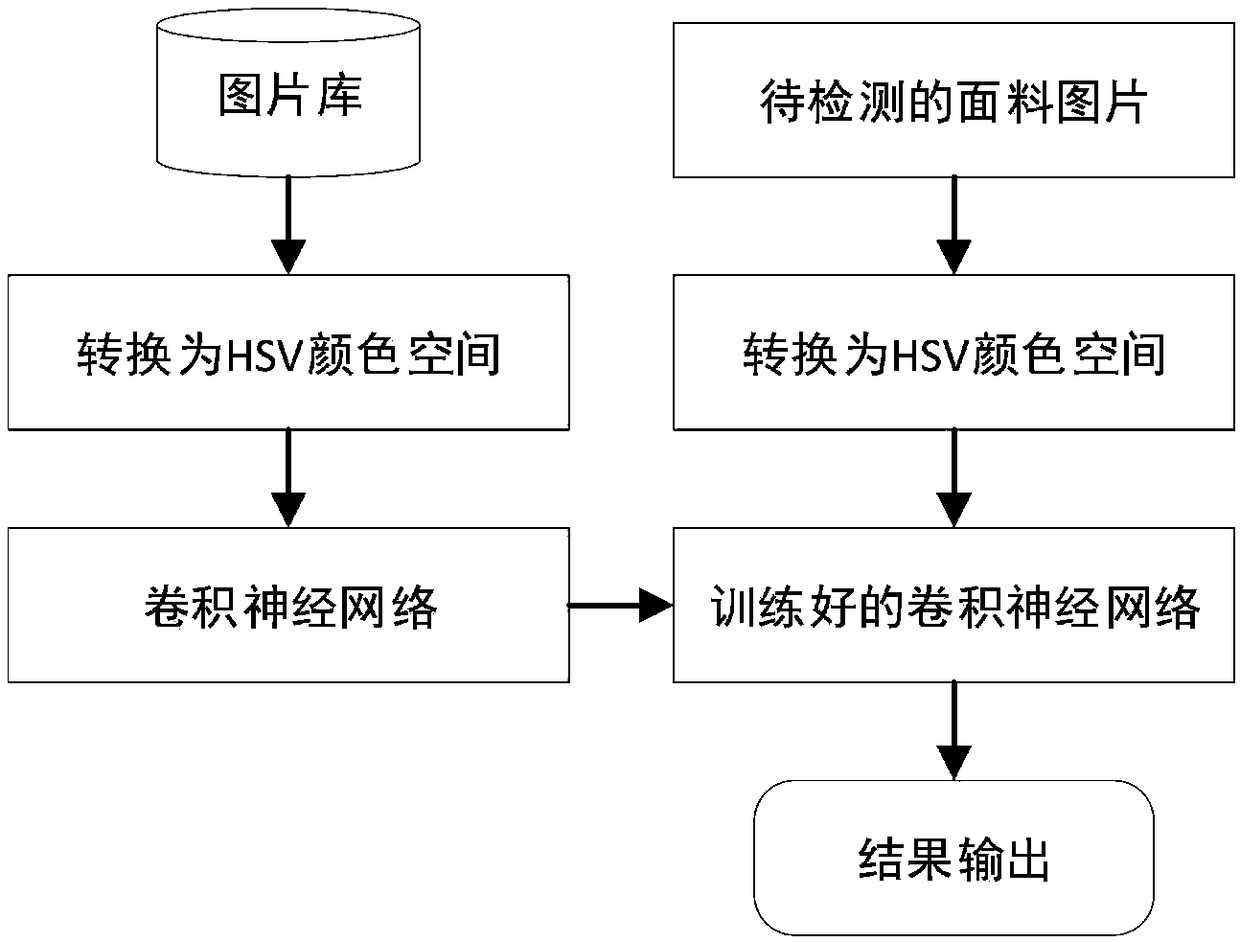A fabric principal component detection method based on a convolution neural network
A convolutional neural network and detection method technology, applied in the field of fabric component detection, can solve the problems of increased detection difficulty and challenge, low classification accuracy, and high requirements, so as to reduce the detection operation threshold, improve detection accuracy, The effect of simplifying the inspection process
- Summary
- Abstract
- Description
- Claims
- Application Information
AI Technical Summary
Problems solved by technology
Method used
Image
Examples
Embodiment Construction
[0027] In order to describe the present invention more specifically, the technical solutions of the present invention will be described in detail below in conjunction with the accompanying drawings and specific embodiments.
[0028] Such as figure 1 As shown, the fabric principal component detection method based on the convolutional neural network of the present invention comprises the following steps:
[0029] (1) Make a picture library.
[0030] Suppose you want to test 5 kinds of fabrics whose main components are cotton, acrylic, tencel, polyester and wool.
[0031] 1.1 Use 200 times magnification equipment to collect 4000 pictures for each of the five types of fabrics. The collected pictures are as follows: figure 2 As shown, after cutting out the irrelevant part of the picture, it is as follows image 3 As shown, convert the image from the RGB color space to the HSV color space, and compress the image to a size of 384×384×3.
[0032] 1.2 Number the 5 categories, cott...
PUM
 Login to View More
Login to View More Abstract
Description
Claims
Application Information
 Login to View More
Login to View More - R&D
- Intellectual Property
- Life Sciences
- Materials
- Tech Scout
- Unparalleled Data Quality
- Higher Quality Content
- 60% Fewer Hallucinations
Browse by: Latest US Patents, China's latest patents, Technical Efficacy Thesaurus, Application Domain, Technology Topic, Popular Technical Reports.
© 2025 PatSnap. All rights reserved.Legal|Privacy policy|Modern Slavery Act Transparency Statement|Sitemap|About US| Contact US: help@patsnap.com



